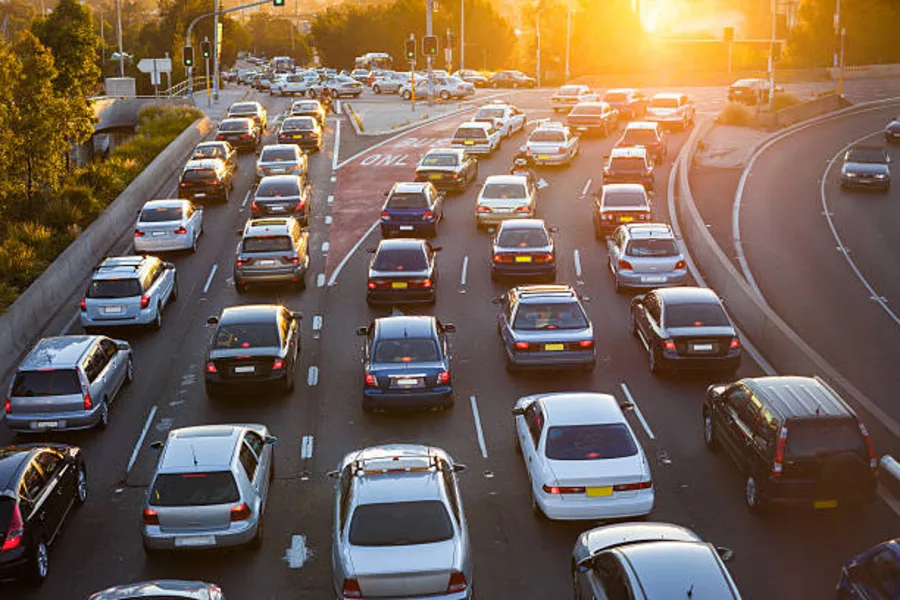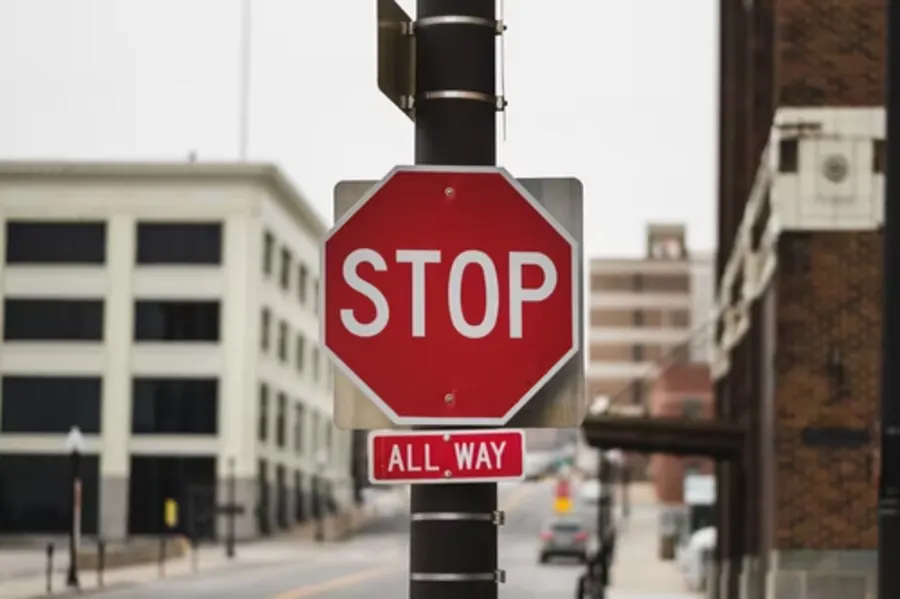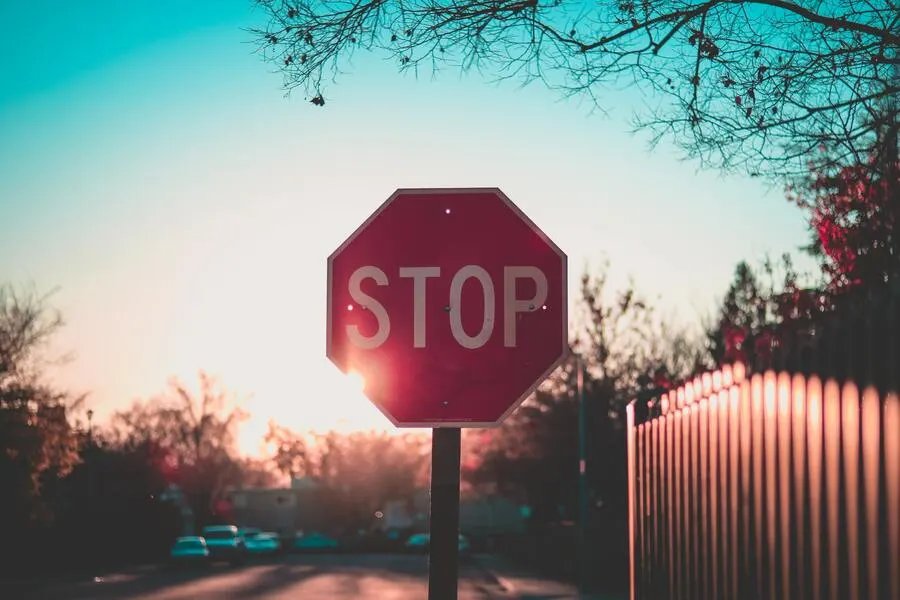To quickly answer, a stop sign is a sign for vehicles to make a complete stop while an all-way stop sign is the same as a four-way stop sign. Traffic encountering a regular or 2-way stop sign is required to come to a complete stop and yield the right-of-way to oncoming traffic.
If there’s no dispute, several vehicles may enter the intersection. Vehicles turning left must give way to traffic moving straight ahead.
At a junction, the right-of-way is granted to your car by the stop sign. If every driver pays attention to and complies with the STOP signs placed in the proper locations, nobody will be inconvenienced. The stop sign is crucial in ensuring that traffic moves through an all-way stop intersection without any hiccups.
To know more, keep on reading.

What is an All-Way Stop Sign?
An all-way stop sign, also known as a four-way sign, is a traffic management system in many countries in which all the vehicles approach a stop intersection for the other cars to pass.
This system was developed for low-traffic areas and is very common in many countries, such as the United States, Canada, Mexico, South Africa, and Liberia. It’s often in rural areas in Australia.
Where there’s a very limited vision on the intersection approaches. At certain crossroads, extra plates listing the number of approaches may be added to the stop signs.

How is it operated?
In many jurisdictions of the US, all-way signs are similar. An automobile operator, when approaching or reaching an intersection with an all-way stop sign, should fully stop before the stop line or crosswalk. Any individual can cross the road as they have the full authority to cross the road even without any markings.
These are the instruction every driver should follow in all-way intersections:
- If a driver arrives at an intersection and there are no other vehicles present, the driver may proceed.
- If there are already one or more cars approaching the intersection, let them take measures first, then proceed.
- If a vehicle is parked behind one of the cars ahead, the driver who arrived first will pass that vehicle.
- If a driver and another vehicle arrive at the same time, the vehicle on the right has the right-of-way.
- If two vehicles arrive at the same time and there are no vehicles on the right, they may proceed at the same time if they are going straight ahead. If one vehicle is turning and another is going straight, the straight vehicle has the right-of-way.
- If two vehicles arrive at the same time and one is turning right and the other is turning left, the vehicle turning right has the right-of-way. Because they are both attempting to turn onto the same road, the vehicle turning right should be given priority because it’s closest to the lane.
Why Do Most Accidents Happen at an Intersection?
Most drivers think that fatal accidents don’t occur. Due to this, most accidents happen in an intersection. People should drive with full safety and should be cautious, even in an intersection.
Here are some reasons why accidents often happen at an intersection:
- Mostly drivers who run a red light or a red light, which cost about 10,500 deaths in the USA in 2017.
- Absent-mindedness at an intersection
- Crossing over
- Aggressive driving
- Speeding

What Is a Stop Sign?
A stop sign means to completely stop before the stop line. This goes for drivers and pedestrians, the intersection should be clear of vehicles or pedestrians before passing the stop sign.
In many countries, the stop sign is the standard red octagon with the word stop, which could be in English, or in the country’s native Language which could be in yellow or white.
The Vienna Convention on Road Signs and Signals allows alternative stop signs, a red circle with a red inverted triangle, which could be in yellow or white background, and the text in dark blue or black.
Configuration of the Stop Sign
The 1968 Vienna Convention on Road Signs and Signals allowed two types of design for the stop sign and several other variants. B2a is a red octagonal sign with a white stop legend.
The European Annex to the convention also allows the background color to be light yellow. Sign B2b is a red circle with a red inverted triangle on a white or yellow background, and a stop legend in black or dark blue.
The Convention also allows the word “stop” in the English language or the native language of that particular country. Finished the final version of the United Nations Economic and Social Council’s conference on road traffic on 1968.
In which they proposed that the standard size of the sign would be 600, 900, or 1200 mm. Whereas for England and New Zealand stop sign sizes are 750, 900, or 1200 mm.
In the US the stop sign is about 30 inches (75 cm) opposite flats of the red octagon, with a 3/4-inch (2 cm) white border. The white uppercase stops legend measures 10 inches (25 cm) in height. On multi-lane expressways, larger signs of 35 inches (90 cm) with a 12-inch (30 cm) legend and a 1-inch (2.5 cm) border are used.
There are regulatory provisions for extra-large 45-inch (120 cm) signs with a 16-inch (40 cm) legend and a 1+ 3 / 4 -inch border for use where sign visibility or reaction distance is limited. And the smallest permissible stop sign size for general use is 24 inches (60 cm) with an 8-inch (20 cm) legend and a 5 / 8 -inch (1.5 cm) border.
The metric units specified in US regulatory manuals are rounded approximations of US customary units rather than exact conversions. All of the elements in the field, legend, and border are retroreflective.
Countries and Their Stop Sign
| Arabic speaking countries | Armenia | Cambodia | Cuba | Laos | Malaysia and Brunei | Turkey |
| قف qif (except for Lebanon, which only uses stop since 2018) | ԿԱՆԳ kang | ឈប់ chhob | pare | ຢຸດ yud | berhenti | dur |
The Distinction Between a Stop Sign and an All-Way Stop Sign
A stop sign is a basic stop sign in which vehicles and pedestrians come to a halt before the stop line, if there’s no car on both sides or opposite then you can proceed. Or else, you should first let others exceed then you should proceed further.
Whereas for an All-way stop sign or a four-way stop sign, the driver stops at an intersection to let another person pass, this traffic system was developed for only the low-traffic areas, mostly in rural areas. A lot of accidents happen in such intersections as the drivers mindlessly drive and don’t think that the accident in an intersection is that fatal.
The sign is almost similar to the all-way stop sign has all-way written below the stop sign. They both are octangular and have red background color with white text color for stop and in other countries stop sign is written in their native language.
Conclusion
- The signs for both stop and all-way stop are similar but in the all-way stop sign. The all-way is written beneath the stop, whereas for the standard stop sign there’s just a stop written color scheme is also the same.
- The stop sign and all-way stop sign are placed both in the same place on the right side of the intersection.
- Stop signs are very helpful and there must be at least one stop sign at every intersection as it helps drivers from accidents. About half of the crashes in 2017 in the US were in the intersection.

